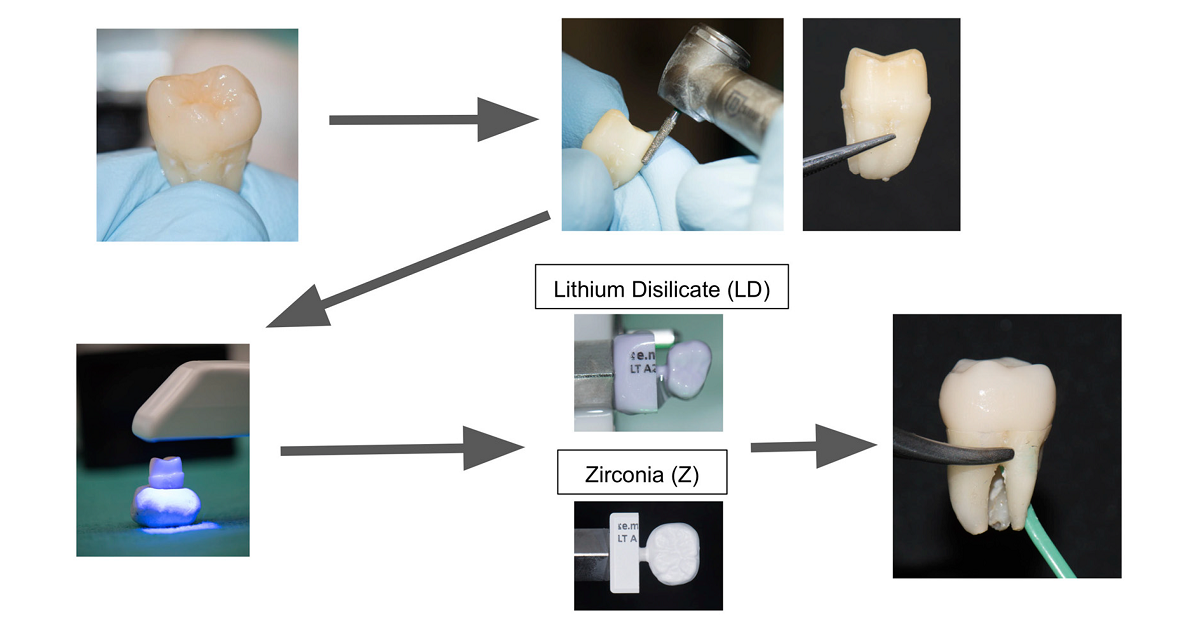Recent Advancements in Technology and Applications for Dental Ceramics (Second Edition)
A special issue of Materials (ISSN 1996-1944). This special issue belongs to the section "Biomaterials".
Deadline for manuscript submissions: 30 June 2024 | Viewed by 878

Special Issue Editor
Interests: digital dentistry; guided implant surgery; structural biology; protein structure; salivary biomarkers; salivary proteomics
Special Issues, Collections and Topics in MDPI journals
Special Issue Information
Dear Colleagues,
Recent advancements in dental ceramics have ushered in a transformative era, extending their applications from conventional restorative materials to bone-grafting materials, dental implants, and orthodontic brackets. Notably, the landscape of restorative ceramics has undergone remarkable evolution in recent decades, significantly impacting clinical practice. Moreover, these advancements have paved the way for the integration of complementary materials, such as luting cements and bonding protocols, offering a holistic approach to dental restorations. A noteworthy development is the emergence of restorative ceramic materials tailored for digital fabrication, effectively bridging the gap between dental laboratories and on-site facilities. In this context, the popularity of layered and monolithic lithium disilicate, zirconia, and other ceramic materials has soared to unprecedented heights.
This Special Issue provides an intellectual platform for the exploration of research papers, reviews, and technical articles that traverse the realms of material sciences, contemporary techniques, and the clinical applications of dental ceramics. We extend a warm invitation to submissions that not only delve into the current state of the art, but also envision novel horizons for dental ceramics. The spectrum of topics encompassed includes, but is by no means restricted to, the following focal areas:
- Comprehensive characterization of material properties intrinsic to dental ceramics;
- Rigorous in vitro experimentation elucidating nuances of dental ceramic behavior;
- Exploration of CAD/CAM applications, intraoral scanning, and the burgeoning realm of one-day dentistry;
- Scrutiny of abutment tooth preparation techniques by embracing cutting-edge methodologies;
- Innovations in digital designs optimized for ceramic prosthetic applications;
- Advanced bonding techniques synergizing with the intricate nature of dental ceramics;
- Delving into restorative retrievals to unravel insights into their clinical implications;
- Harnessing the potential of laser treatment for dental ceramic materials, opening up avenues for novel applications;
- Probing color perceptions and the intricate optical properties underlying dental ceramics;
- Aesthetic considerations governing the utilization of dental ceramics in restoring natural smiles;
- Examination of biofilm dynamics and microbial interactions on dental ceramic surfaces, accentuating their clinical relevance;
- Exploration of phase transformation and the fracture resistance panorama within dental ceramics;
- Precision surface finishing and polishing techniques augmenting the clinical viability of dental ceramics;
- Adapting ceramics to the realm of dental implant abutments and dental implants, fusing material innovation with clinical practice;
- Rigorous evaluations of wear resistance intrinsic to dental ceramic materials;
- Unveiling the intricate dynamics of natural tooth wear as a result of dental ceramics, rendering insights into their long-term implications;
- Employing finite element analysis to unravel the mechanical intricacies of dental ceramic materials;
- Insights into luting cement formulations optimized for seamless integration with dental ceramics;
- Navigating the realm of 3D printing for dental ceramics, unlocking novel fabrication paradigms;
- Unveiling the machinery and fabrication techniques underpinning the production of dental ceramics;
- Expanding ceramic applications to the realm of orthodontics, with a focus on innovation and efficacy;
- Harnessing the potential of bioceramics for bone regeneration and grafting materials, and advancing regenerative dentistry.
We extend an enthusiastic welcome to contributions that enrich our understanding of the multifaceted world of dental ceramics, transcending boundaries between material science advancements and their translation into the intricate landscape of contemporary dental prosthetics. Furthermore, we encourage insights into the integration of AI and advancements in ceramic prosthetic design, thereby fostering a holistic understanding of the evolving interdisciplinary paradigms in modern dentistry.
Prof. Dr. Sompop Bencharit
Guest Editor
Manuscript Submission Information
Manuscripts should be submitted online at www.mdpi.com by registering and logging in to this website. Once you are registered, click here to go to the submission form. Manuscripts can be submitted until the deadline. All submissions that pass pre-check are peer-reviewed. Accepted papers will be published continuously in the journal (as soon as accepted) and will be listed together on the special issue website. Research articles, review articles as well as short communications are invited. For planned papers, a title and short abstract (about 100 words) can be sent to the Editorial Office for announcement on this website.
Submitted manuscripts should not have been published previously, nor be under consideration for publication elsewhere (except conference proceedings papers). All manuscripts are thoroughly refereed through a single-blind peer-review process. A guide for authors and other relevant information for submission of manuscripts is available on the Instructions for Authors page. Materials is an international peer-reviewed open access semimonthly journal published by MDPI.
Please visit the Instructions for Authors page before submitting a manuscript. The Article Processing Charge (APC) for publication in this open access journal is 2600 CHF (Swiss Francs). Submitted papers should be well formatted and use good English. Authors may use MDPI's English editing service prior to publication or during author revisions.
Keywords
- bioceramics
- CAD/CAM dentistry
- ceramic technology
- dental ceramics
- restorative materials






